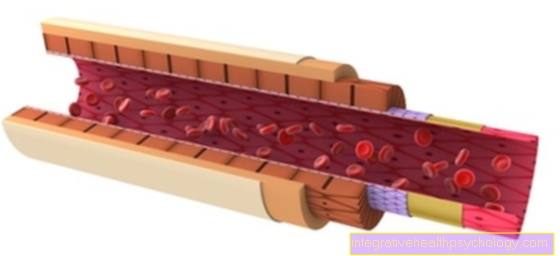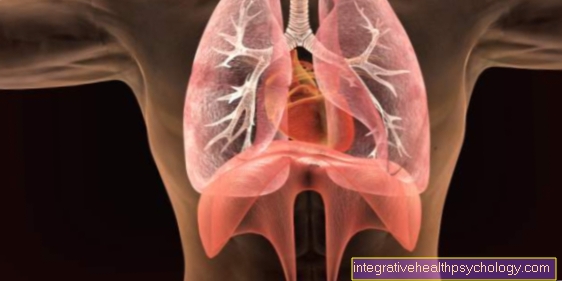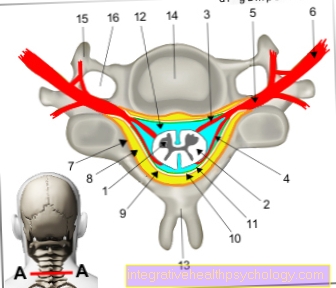Minimally Invasive Surgery (MIS)
Synonyms in a broader sense
.jpg)
- Buttonhole surgery
- Keyhole surgery
- MIC
What is Minimally Invasive Surgery
Minimally Invasive Surgery (MIS) is the umbrella term for surgical techniques in which a surgical intervention is carried out in the area of the abdomen (laparoscopy) and the chest (thoracoscopy), the groin or the joints (e.g. knee joint -> arthroscopy). Only the smallest skin incisions (incisions) are used in order to carry out the operation inside the body under video view in the corresponding body cavity with the video cameras, light sources and surgical instruments.This surgical method is usually gentler and less stressful on the body than conventional ("open") operations, as there is no need to open body cavities and joints.
Special features of the MIS operation method
The technical and instrumental expenditure for the minimally invasive surgical procedure is extremely high compared to the conventional open surgical methods.
The application of minimally invasive operations is correspondingly demanding. State-of-the-art surgical equipment and special instruments (video cameras, special optical probes, etc.) are required to be able to view the operating area.
The MIC approach also requires special skills on the part of the surgeons, in particular spatial imagination, as well as special coordination skills between the video image and the operating area.
Implementation of the MIC
Most minimally invasive surgery are performed with optics and thin instruments that are inserted through the abdominal wall, chest wall or joint capsule. For this purpose, trocars, sleeves as guides for camera optics and instruments are inserted.
For laparoscopic operations (Laparoscopy) sterile gas (carbon dioxide) is introduced into the abdominal cavity (abdomen) to create a space (pneumo- or capnoperitoneum) that enables the laparoscopy. The enlargement and targeted lighting of the operating area then enables the display and assessment of the operating area. In the area of joints, water is used during arthroscopy to expand the joint space and to protect the surrounding structures.
Minimally Invasive Surgery Options
_2.jpg)
The possibilities of minimally invasive surgery are relatively difficult to enumerate as these are constantly expanding and developing. The experience of the individual surgeon also plays a major role. In general, it can be said that nowadays, due to the constant development of technology, devices and instruments, more and more operations can be performed in a minimally invasive manner.
General and abdominal surgery:
- Gallbladder surgery (cholecystectomy)
- Operation of diaphragmatic hernias and Reflux disease (Fundoplication)
- Gastric band surgery and gastric bypass surgery in patients with disease Obesity
- Colon and rectal operations (e.g. for diverticular disease or tumors)
- Spleen removal
- Removal of the appendix (appendectomy for Appendicitis)
- Loosening of adhesions in the abdomen (adhesiolysis)
- Oparation on Inguinal hernia
- Scar and abdominal wall hernias, Umbilical hernia
- Diagnostic interventions in the abdominal cavity and targeted tissue removal (biopsy) of various organs (liver, Lymph nodes i.a.)
- Operations on the thyroid and Parathyroid
Thorax surgery:
- Sampling
- Removal of superficial lung tumors
- Removal of the lung membrane on the chest wall in the event of spontaneous entry of air into the gap between the lungs and the chest wall (Spontaneous pneumothorax)
Gynecology:
- distance from Ovarian cysts
- Sampling
- Diagnosis of the patency of the fallopian tubes
Trauma surgery, Orthopedics:
- diagnostic Jointoscopy
- Front Cruciate ligament surgery at the knee joint
- Meniscal surgery
- Cartilage smoothing
- Carpal tunnel split
Minimally Invasive Surgery is still subject to rapid development. More and more new techniques are being developed that allow further surgical treatments to be carried out in a minimally invasive manner. Existing MIC techniques will be further developed.
Laparoscopic removal of the Gallbladder For example, it has now become the undisputed standard in the surgery established. The development that this method has undergone is remarkable. The first laparoscopic gallbladder removal in Germany took about 9 hours. Nowadays, in an uncomplicated case, this takes about 40-60 minutes. possible.
The minimally invasive removal of part of the colon has been very controversial, especially for tumors. The method was partially rejected, mainly because of the surgeon's lack of tactile control. But there is also progress in this area. Today, a hand of the surgeon can be inserted through a very small incision in the abdominal wall, which can then not only replace some instruments during the operation with coordinated finger movements, but also and above all can feel. This enables a further inspection of the diseased tissue.
At the beginning of the MIC era, only operations in pre-existing body cavities were imaginable. Minimally invasive interventions are now being carried out in areas that were initially considered unsuitable. In a minimally invasive inguinal hernia operation, for example, an abdominal wall mirroring is carried out in which a space is only created for the mirroring by means of air. The air is released after the operation so that normal anatomical conditions can be restored.
As always at the beginning, some of the minimally invasive interventions can only be carried out in studies. Therefore many methods are discussed among surgeons that are not yet widely used.
Advantages of the minimally invasive surgical method
The advantages of minimally invasive surgical techniques have now been scientifically researched. The following plus points are considered a gain compared to open operations:
- minor skin incisions
- less adhesions
- lower risk of scar hernias
- less pain
- faster recovery and resumption of work and exercise
- shorter hospital stay
- cosmetically excellent results (smallest, barely visible scars)
- Video and image documentation of the operations possible
- improved visibility for the surgeons, especially in operating areas that are otherwise difficult to access, e.g. Rectal surgery
However, it should be noted that this is a very general assertion and in many individual cases it becomes invalid.
It should also be noted that the minimally invasive approach has not made the operations any less complicated or less expensive. Partial removal of the colon is still a very stressful procedure for the patient. The minimally invasive surgery only reduces the additional stress caused by the previously necessary abdominal incision.
Limits and disadvantages of the MIC
_3.jpg)
As with all other methods, the MIS surgical methods technical limits. These exist on the one hand in the currently available instruments and in the fact that the anatomical orientation on the screen is two-dimensional. In most cases, the surgeon lacks a direct sense of touch.
Patients must therefore be aware that with every procedure unforeseeable complications and / or other special features must be converted to the open surgical method. Since this is usually the same anesthesia happens, all patients are informed in detail before the operation about the possible consequences and consequences that may result from the operation.
In addition to the change in operations, the specific storage with some minimally invasive interventions (e.g. rectal surgery) an additional risk, especially for heart sick people The surgical risk is higher with some "minimally invasive" operations than with the open procedure. The closure of an inguinal hernia via a laparoscopy has e.g. turned out to be more risky than open surgery. Therefore, there has recently been a downward trend towards open surgical procedures in this operation.
In addition to the limits, the disadvantages of minimally invasive operations should also be mentioned. These operations can not under local anesthesia and require anesthesia. The costs for the operations are higher than for conventional surgical procedures, as the technical effort is very high. However, this is partially offset by the shorter overall length of stay in hospital.
Summary
Minimally invasive surgery is a relatively new field. Developments over the last few decades have made a number of minimally invasive operations possible.
These are different procedures which, in addition to clear advantages, also have disadvantages and risks. Many of these procedures are still subject to rapid development, so that further possibilities can be expected from minimally invasive surgery.





























